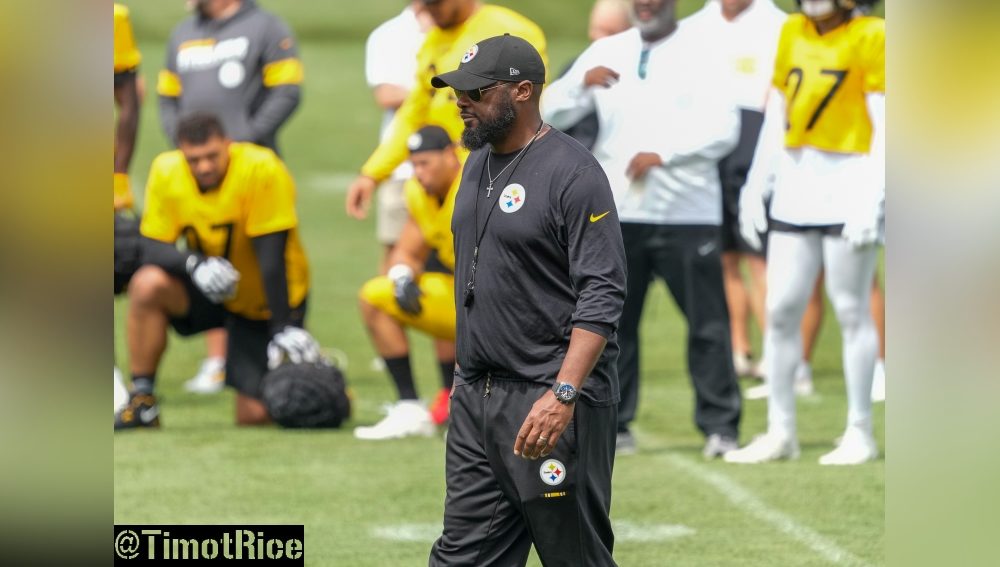Sources: College football oversight committee pushing to expand coaching role of all staff members
Ross Dellenger
Senior College Football Reporter
Wed, Mar 27, 2024, 7:01 AM CDT·6 min read
In many aspects, college athletics is steadily expanding.
The College Football Playoff, for example, is moving from four to 12 teams. The four major conferences will grow next academic year by a combined 13 teams. League television contracts continue rising, coaching salaries soar and the schedule itself is growing longer.
Next up: coaching staffs.
The NCAA Football Oversight Committee introduced a legislative proposal this month that would expand the abilities of a football support staff, permitting all staff members to provide players skill and tactical coaching instruction — both during practice and games. The proposal, introduced for a second straight year after failing to get approval last spring, eliminates the policy limiting coaching instruction to only the NCAA’s maximum of 11 “countable” coaches: the 10 assistants and head coach.
The proposal strictly maintains the number of off-campus recruiters to 11, but gives flexibility to head coaches to potentially designate any 10 staff members as “countable” coaches who are eligible to recruit off-campus.
The proposal is now in a six-week socialization stage as members of the oversight committee receive feedback from their respective conferences. The committee is scheduled to meet in mid-May to assess feedback and potentially adopt the legislation. Any adoption from the committee is subject to the approval of the DI Council, the primary NCAA governing board that consists of 40 members from all 32 conferences.
If the proposal is adopted, it will take effect either in time for summer training or the start of fall camp, said Craig Bohl, the executive director of the American Football Coaches Association. The AFCA endorses the proposal “100%,” said Bohl, who sits on the oversight committee.
“This is probably the most common sense approach that we could make,” he told Yahoo Sports. “For years, we’ve had analysts and quality control coaches who have had a desire to coach. So much has changed with the landscape with players now being compensated. To be concerned that you’re going to have an assistant quarterbacks coach out there coaching is counter productive. It’s been a compliance nightmare.”
For years now, coaches have encouraged administrative leaders to expand coaching abilities to their full staffs beyond the 11 countable coaches. Most FBS programs have upwards of two dozen support staff members with various titles such as analyst, recruiting coordinator, quality control coach and directors of player personnel, player development and player relations.
According to NCAA rules, those staff members — many of them former position assistants and head coaches — are not permitted to provide coaching instruction to players within the building, at practice or during games. It’s a somewhat unenforceable rule that many schools already violate to a degree.
“It really takes all the gray area out of what each role can do and not do,” said West Virginia coach Neal Brown, a member of the AFCA Board of Trustees. “There is a little gray area in some leagues, and some compliance departments look at it differently than others. I think it’s really good for the profession. Our job as coaches is to grow and develop those on your staff.”
However, lifting the limitations opens the door for the further expansion of staffs that have swelled over the years.
The Division I Council rejected a similar proposal last spring in a surprising move that angered many in the coaching profession. The Council, encompassed mostly of administrators as well as representatives from FCS and non-football playing leagues, did not adopt the proposal predominantly out of the policy change triggering a proliferation of coaching staffs.
Coaches push back on such a notion. Auburn coach Hugh Freeze, one of the loudest supporters of the change, believes that most teams at the major conference level will employ a second assistant at each position group and a separate coach for special teams.
The policy change would likely produce more coaches designated with NFL-like titles, such as assistant offensive line coach or assistant quarterbacks coach.
“You can have too many. I don’t want 40 coaches,” Freeze told Yahoo Sports. “We need more people than ever to try to hold our teams together. We need the bodies to help capture our kids and culture and manage the 85 (man roster). At some point, we’re limiting their growth.”
There are several potential unintended consequences aside from swelling staffs.
The change could be viewed as yet another way that more well-resourced programs will separate themselves, spending hundreds of thousands of dollars to stockpile coaches. Many expect the move will trigger more coaching movement from the Group of Five to Power Four.
There is also a question of the proposal’s impacts on the graduate assistant position. Each team is allotted two graduate assistants who are able to provide coaching to players. Opening up coaching abilities to all staff members eliminates that unique benefit of GAs.
Charged with vetting this issue by the oversight committee, Bohl believes there will still exist a sustainable and healthy pathway for graduate assistants under the academic model if the proposal is adopted.
The proposal comes a few weeks after the NCAA Rules Committee recommended the implementation this season of a player-to-helmet communications system. Coaches will have the ability to communicate with one player on each side of the ball through a helmet mic that cuts off with 15 seconds remaining in the playclock. They will also have the ability to watch previous plays on digital tablets from the sideline — a reason that the coaching proposal expands to in-game instruction, Bohl said.
The committee examined several versions of the proposal, including one in which only the 10 countable coaches and head coach could provide skill instruction on gameday. The current version of the proposal could change as committee members receive feedback.
“With the tablets on the sideline, it seems counterproductive, as coaches, not to allow coaching duties during the game,” Bohl said.
In the recruiting space, 11 staff members would be designated for off-campus recruiting. Those 11 people would be required to adhere to NCAA protocols and current recruiting limitations. While that could extend beyond position assistants, Bohl believes that most position assistants would want to recruit as a way to begin building relationships with their future players.
“Some people say you could hire a bunch of quality control guys to coach and you’d have these other guys recruiting. That’s an NFL model,” Bohl said. “What I see, when you’re out recruiting, you are still projecting. The relationships… the guy who recruits these guys is going to want to coach them.”
The recruiting portion of the proposal allows for flexibility similar to the NFL, Brown said. Those coaches who were in non-coaching roles would be permitted to teach.
“It gives experienced staff members who don’t like the grind of recruiting an opportunity to get them back on the field coaching rather than being in an advisory role,” he said.




